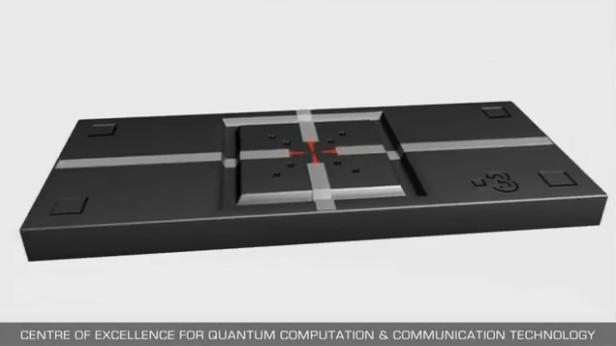A team of physicists at the University of New South Wales (UNSW) has developed a ‘perfect’ single-atom transistor which could help the industry reach the final limits of Moore’s Law.
Created with a scanning tunnelling microscope (STM), it is composed of a phosphorus atom embedded between atomic-scale electrodes and electrostatic control gates, and could provide a template to be used in future quantum computers, according to the UNSW press release.
A ‘perfect’ transistor
 Professor Michelle Simmons, director of the ARC Centre for Quantum Computation and Communication Technology and group leader of the project at UNSW, describes the transistor as ‘perfect’ due to the team’s high level of accuracy and control over an individual atom. Previously developed single-atom devices had a margin of error because atoms could only be placed with an an accuracy of approximately 10 nanometres.
Professor Michelle Simmons, director of the ARC Centre for Quantum Computation and Communication Technology and group leader of the project at UNSW, describes the transistor as ‘perfect’ due to the team’s high level of accuracy and control over an individual atom. Previously developed single-atom devices had a margin of error because atoms could only be placed with an an accuracy of approximately 10 nanometres.
“Our group has proved that it is really possible to position one phosphorus atom in a silicon environment – exactly as we need it – with near-atomic precision, and at the same time register gates,” Dr Martin Fuechsle, a research fellow at UNSW, said in a statement.
In addition to the success achieved in creating the highly precise transistor, its electrical properties correspond with predictions made by researchers at the University of Melbourne and Purdue University in the US, joint authors on the paper which appeared in the Nature Nanotechnology journal.
The development of this transistor has a profound impact on Moore’s Law, an observation made fifty years ago by Intel’s Gordon Moore that the number of transistors on a chip would double every eighteen months or so. It’s long been known that the law must break down when transistors are made on an atomic scale – but the UNSW team’s results suggest we may be able to go further into the atomic realm, and get there quicker, than had previously been thought.
“We really decided 10 years ago to start this program to try and make single-atom devices as fast as we could, and beat that law,” said Michelle Simmons. “So here we are in 2012, and we’ve made a single-atom transistor roughly 8 to 10 years ahead of where the industry is going to be.”
Other atomic level results include the use of single -atom films of graphene, and a team of IBM researchers who stored a bit of data using just twleve atoms.
Though the limits of computing have been broadened, quantum computers will yet take time to develop, especially since UNSW’s transistor requires very low temperatures to operate.




